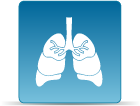Naphthalene
CASRN 91-20-3 | DTXSID8020913
- Toxicological Review (PDF) (116 pp, 565 K)
- IRIS Summary (PDF) (32 pp, 102 K)
- Status: Naphthalene is in step 1 at this time; see Quick Check.
Noncancer Assessment
Reference Dose for Oral Exposure (RfD) (PDF) (32 pp, 102 K)
Last Updated: 09/17/1998
| System | RfD (mg/kg-day) | Basis | PoD | Composite UF | Confidence |
|---|---|---|---|---|---|
| Other | 2 x 10-2 | Decreased mean terminal body weight in males |
NOAEL
(ADJ): 7.1 x 101 mg/kg-day |
3000 | Low |
Reference Concentration for Inhalation Exposure (RfC) (PDF) (32 pp, 102 K)
Last Updated: 09/17/1998
| System | RfC (mg/m3) | Basis | PoD | Composite UF | Confidence |
|---|---|---|---|---|---|
| Nervous, Respiratory | 3 x 10-3 | Nasal effects: hyperplasia and metaplasia in respiratory and olfactory epithelium, respectively |
LOAEL
(HEC): 9.3 mg/m3 |
3000 | Medium |
Cancer Assessment
Weight of Evidence for Cancer (PDF) (32 pp, 102 K)
Last Updated: 09/17/1998
| WOE Characterization | Framework for WOE Characterization |
|---|---|
| C (Possible human carcinogen) | Guidelines for Carcinogen Risk Assessment (U.S. EPA, 1986) |
| Carcinogenic potential cannot be determined | Proposed Guidelines for Carcinogen Risk Assessment (U.S. EPA, 1996) |
- Using criteria of the 1986 Guidelines for Carcinogen Risk Assessment, naphthalene is classified in Group C, a possible human carcinogen. This is based on the inadequate data of carcinogenicity in humans exposed to naphthalene via the oral and inhalation routes, and the limited evidence of carcinogenicity in animals via the inhalation route. Using the 1996 Proposed Guidelines for Carcinogen Risk Assessment, the human carcinogenic potential of naphthalene via the oral or inhalation routes "cannot be determined" at this time based on human and animal data; however, there is suggestive evidence (observations of benign respiratory tumors and one carcinoma in female mice only exposed to naphthalene by inhalation [NTP, 1992a]). Additional support includes increase in respiratory tumors associated with exposure to 1-methylnaphthalene.
- This may be a synopsis of the full weight-of-evidence narrative.
Quantitative Estimate of Carcinogenic Risk from Oral Exposure (PDF) (32 pp, 102 K)
Not assessed under the IRIS Program.
Quantitative Estimate of Carcinogenic Risk from Inhalation Exposure (PDF) (32 pp, 102 K)
Not assessed under the IRIS Program.
- Human Health Benchmarks for Pesticides (HHBP). This database provides human health benchmarks for pesticides that may be present in drinking water.
- Office of Pesticide Programs Pesticide Chemical Search. This database provides links to health effects information and registration status for pesticides.
- Chemistry Dashboard. This database provides information on chemical structures, experimental and predicted physicochemical, and toxicity data.
Naphthalene is being reassessed.
Assessment Manager(s): Andrew Kraft (kraft.andrew@epa.gov), Dahnish Shams (shams.dahnish@epa.gov)
| Step | Assessment Materials Released to the Public | Release Date | Public Meeting Date |
|---|---|---|---|
| 1 | Problem Formulation Materials | 07/2018 | TBD |
| 1 | Preliminary Assessment Materials | 03/2023 | TBD |
| 4 | Public Comment Draft | TBD | TBD |
| 4 | Peer Review Draft | TBD | TBD |
| 7 | Post Final Assessment | TBD |
Please note: Any future dates displayed under Release Date are estimates and subject to change.
You will need Adobe Reader to view some of the files on this page. See EPA’s PDF page to learn more.
Quick Check




